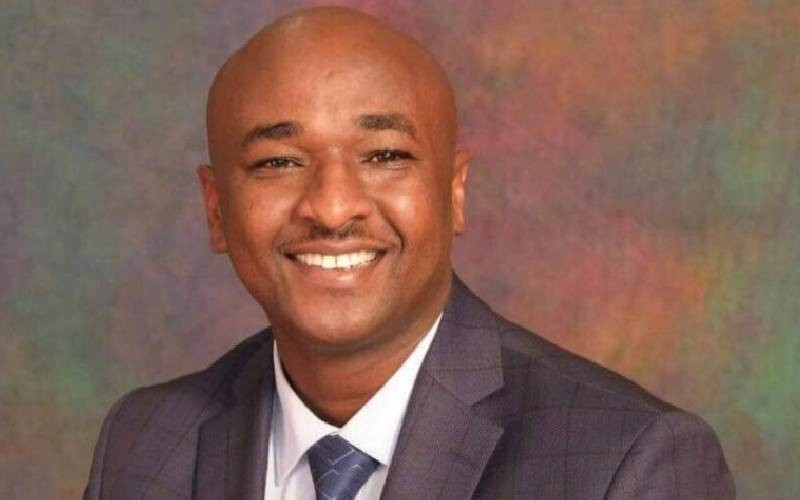The funeral ceremony of Musalia Mudavadi’s mother created space for new and controversial political pronouncements by the president and the larger political class represented there. In addition, the day seemed to have intensified the mood of helplessness among those who had long been fatigued by the unworkable quest for Luhya unity.
While scandalously avoiding to address the real issue of comforting the bereaved and general mourners, whenever each restless politician stood up to speak, only one itching theme dominated that day-Luhya unity. It was as if the meeting had been called purposely to address that issue.
When Francis Atwoli’s time to speak came, the podium turned hypnotic and overwhelmingly spellbinding. Exhibiting varying degrees of conscious and unconscious mimicry, he threw the mourners into more confusion when he began to ‘incite’ the president to be “man enough” and sack the DP to save his legacy. Mudavadi, although downcast, also repeatedly questioned why it has not been possible to have lasting Luhya unity.
Finally, after listening to all the speeches and with all boisterousness of his personality, the visibly angry president spoke and left the mourners huddled in silence: “Kenya cannot be ruled by two ethnic groups only”, he said. He also denounced the rhetoric of ‘Hustler Nation’ as ‘rubbish’. Only in his closing remarks did he promise seductive incentives for the people of Mululu—tamarking of a road. But the unresolved issue of Luhya unity had stirred the crowd, just as the suggestion for rotational presidency.
Be that as it may, the question still remains: Why has it been so difficult for Luhya to have political unity such as their Kikuyu or Luo counterparts? In this article, I trace the elusive pursuit of Luhya unity and examine the consequences especially within the context of rotational presidency debate.
Throughout our history, ethnicity has continued to influence many issues related to politics, governance, conflict and stability. Why has it been so easy to mobilise Kikuyu, Luo and Kalenjin and not the Luhya? I offer several premises.
One, Luhya politics is low politics—not high politics. As such Luhya politics is never informed from above–it can only be organised from below.
That is the mistake that many politicians from the region make. To be specific, Luhya politics is informed by the crises of the masses and not the directions given by the political class.
To understand this, we must establish the interactions between ethnicity and voting behaviour and why certain populations are more or less likely to be susceptible to the effects of ethnic cues, if at all, when voting or expressing support in other ways for political parties. We must also consider and situate deep politics to understand the Luhya politics. In this case, we shall conclude by providing an answer to this puzzle.
The only person who can help achieve Luhya unity is the one who is well-suited to oscillate between high and low politics. The one who plays with those in high politics and at the same time the one who understands the peasants or common man’s behaviour or rather the one who lives both lives-of the elite and of the common person.
The Luhya, like their Kisii counterparts, provide a greater diversity both physically and metaphysically than most Kenyan communities.
There are many kingpins or decision-makers who are totally independent from each other. Such geospatial imaginaries are embedded in every day practices of the Luhya. They pervade their consciousness, and in my estimation, help to construct and maintain their political identities.
Three, curiously, ethnic mobilisation among the Luhya sub-groups seems to defy political understanding. In the first place the word Luhya is foreign; it’s just a creation of the Western anthropological folklore of the 1970s.
Originally, they identified themselves as 17 different ethnic communities. Yet, many use ethnicity as the primary source of voter mobilisation and this has become undeniable fact in the Kenyan political life.
This rhetorical tool has always been employed in this area in order to split the support of a key opponent by employing narratives of ethnically motivated discrimination, victimisation and exclusion. In my understanding, political mobilisation should not make this assumption but should focus on each sub-Luhya ethnic group.
Stay informed. Subscribe to our newsletter
Four, Atwoli’s relentless drive for the Luhya unity has never been taken seriously by most Luhya leaders. As Cotu leader, with the privilege of age and independent personality and by not being in the conventional political group, he stands a better chance of forging such unity.
Despite Atwoli’s egotism overflowing his personality, he has had the moral favour, humour and charm and has shown considerable aptitude for Western Kenya politics. He has constantly reminded Luhya political class that Mudavadi had missed being the president by the margin of despair and fracture of the coalition.
While the Luhya have produced two vice presidents, Wamalwa Kijana and Moody Awuori, they have never produced a winning presidential candidate despite being the second most populous tribe.
With the new angle and twist in Kenyan politics provoked by the ‘rotational presidency’ debate, this puts the Luhya community in state of reawakening to revisit their quest for unity since they have the numbers.
Dr Chacha teaches history at Laikipia University
 The Standard Group Plc is a
multi-media organization with investments in media platforms spanning newspaper
print operations, television, radio broadcasting, digital and online services. The
Standard Group is recognized as a leading multi-media house in Kenya with a key
influence in matters of national and international interest.
The Standard Group Plc is a
multi-media organization with investments in media platforms spanning newspaper
print operations, television, radio broadcasting, digital and online services. The
Standard Group is recognized as a leading multi-media house in Kenya with a key
influence in matters of national and international interest.
 The Standard Group Plc is a
multi-media organization with investments in media platforms spanning newspaper
print operations, television, radio broadcasting, digital and online services. The
Standard Group is recognized as a leading multi-media house in Kenya with a key
influence in matters of national and international interest.
The Standard Group Plc is a
multi-media organization with investments in media platforms spanning newspaper
print operations, television, radio broadcasting, digital and online services. The
Standard Group is recognized as a leading multi-media house in Kenya with a key
influence in matters of national and international interest.









